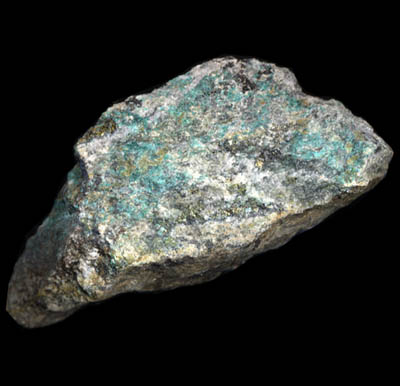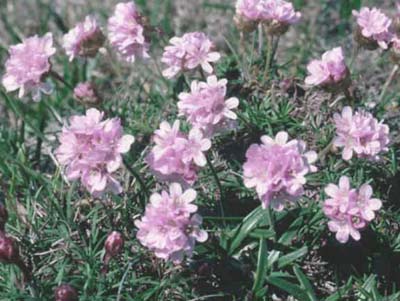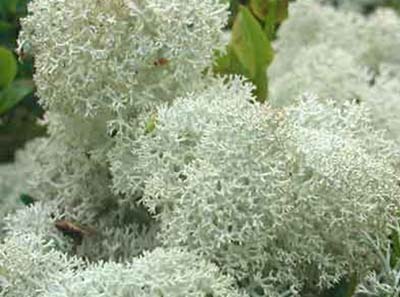| Coed y Brenin Porphyry-copper deposit Duration: 2/3 of a day roughly (typically starting at 1030 and finishing at 1500) Driving on dirt-road with short easy walking. Option 3 requires agility! Required: Cars (maximum of 5); hard hats, hammer, hand-lens; wellies (option 3); waterproofs; lunch! BACK TO INTERPRETATION | |
 | Coed y Brenin (L), to the NE of Dolgellau, is an extensive woodland area in which a network of forest roads and rivers provide some excellent exposures of its complex geology. The overall geological setting comprises Middle to Upper Cambrian sedimentary rocks which are intruded by intermediate to basic igneous rocks of late Cambrian to Lower Ordovician age. These are uncomformably overlain by the Lower Ordovician Rhobell Volcanics. A number of styles of hydrothermal mineralisation are present within the area, and this trip examines the sediments, intrusives, their hydrothermal alteration and the famous porphyry-copper deposit - one of the world's oldest and the finest UK example. |
 | Locality 1 (hard hats here) Illustrated L is a handsize sample of the Upper Cambrian Ffestiniog Flags Formation, exposed in a road-cutting at the first locality. They consist of massive to poorly-bedded pale to dark grey silty mudstones and thinly bedded light grey quartzose siltstones. They locally (but not at this location) contain horizons rich in the fossil brachiopod Lingula. Thus they are of marine origin: they are interpreted to have been deposited in shallow, tidal waters. To the west of this locality, progressively older (but still Cambrian) rocks are exposed. The Ffestiniog Flags are underlain by the Maentwrog, Clogau and Gamlan Formations - all of which are also marine sediments. Exposures of these may be seen at various points along the riverbed of the Mawddach (when it's not in spate). So how old are these rocks? In 2004, the International Subcommission on Cambrian Stratigraphy settled on an age of approximately 490 million years ago for the Cambrian-Ordovician boundary (and 543 million years ago for the beginning of the Cambrian). I'd guess the Ffestiniog Flags are around 510 million years old! |
 | Also exposed at this locality is a small intrusion. The rock is medium-grained and greenish-grey in colour (L). This is typical of most intrusions in the area: originally intermediate to basic rocks, they have undergone major and pervasive hydrothermal alteration, with the replacement of mafic minerals and feldspar by a mixture of chlorite, sericite, quartz and calcite. The local name for these rocks is "greenstone" - an appropriate term! The intrusions occur as abundant sills, less abundant dykes and a number of larger, laccolithic intrusive complexes. They are of Late Cambrian to Lower Ordovician age, and are thought to be related to the same igneous episode that led in time to the subaerial eruption of the Rhobell Volcanics. These basic volcanic rocks are thought to have been erupted during south-easterly subduction of oceanic crust beneath North Wales, in an island-arc setting close to a destructive plate margin. Also noticeable at this site is the presence of common thin veinlets of pyrite. This is a frequent feature in the rocks locally, as the next locality will demonstrate! |
 | Locality 2 This is another road-cutting, and again in the Ffestiniog Flags, but what a difference! They are stained in various rusty shades and are locally covered in yellowish efflorescences. Breaking a fragment open shows a bleached, very pale grey appearance with an abundance of pyrite, both as veins and as impregnations. The rocks are pyritised: this is one of many forms of hydrothermal alteration. Such alteration occurs when chemically-reactive hot groundwaters percolate through the strata. The driving force - and heat-source - was an underground magma-chamber, with cool waters descending by gravity and then being heated and forced back up through the rocks. The whole thing was a giant convective system. Pyritised rocks such as these form a halo around the copper deposit. If you imagine the copper deposit being the hole in a polo-mint, then the pyrite halo is the minty bit! |
 | Locality 3 This is by a beautiful waterfall and plunge-pool. The rocks on the LHS are Ffestiniog Flags again, but on the RHS we are into "greenstone" again. However, this one is more speckly in appearance. It is a porphyritic rock - mapped as a porphyritic microtonalite (an intermediate igneous intrusive rock with more than 20% quartz). |
 | The main interest at this locality, however, is the presence of wide bands of intrusive rock with a pronounced foliation and so crumbly that it comes apart in one's hand. White feldspar phenocrysts are very obvious in this material, as are scattered cubes of pyrite. However it appears to be much less pyritic than the more "solid" bands. This is a rare exposure of part of the Afon Wen Fault system, which gives the valley of the Wen its remarkably straight, NE-SW course. In places it was exposed briefly further downstream, following a major flash-flood in 2001; these exposures again showed soft, shattered igneous rocks and bands of white clay. Here, the rock has maintained its original texture but is so shattered that it literally falls apart: this can be attributed to the great, crushing pressures involved during fault-movements. It is technically a protomylonite. The fault can be traced SW into Middle Ordovician strata on Cadair Idris: it was therefore active after the Rhobell volcanism. The relative lack of pyrite in the fault-shattered rock suggests to me that fluids that ran through this system during its post-Cambrian movements removed a lot of the pyrite! |
 | Locality 4 We now come to an exposure - one of very few (and by far the best!) of the "ore-zone" of the Coed y Brenin porphyry-copper deposit. This prominent bluff-like outcrop was cleared of overlying soil by the Forestry Commission to create a lasting, quality study site. It is also a SSSI, protected by law, and MUST NOT be hammered! Along the sides of the track nearby, however, abundant debris dating from when the section was cleared makes for a good mineral-hunting area. The exposure shows more "greenstone", here a pale colour (L) with hard areas and noticeably shattered areas with a lot of greeny-blue copper-staining. The harder areas reveal porphyritic intermediate intrusive rock with aligned feldspar phenocrysts to 1cm or so long. The shattered areas are of the same rock but the shattering has allowed mineralising fluids to flow in and deposit the copper-ores as thin veinlets and disseminations. The deposit was discovered in the late 1960s by Riofinex Ltd, and drilling indicated at least 200 million tons of reserves carrying >0.3% copper. |
 | Here is a close-up of the primary ore mineralisation in a loose block. Two chief minerals can be seen: firstly golden-yellow chalcopyrite (copper iron sulphide) and secondly metallic grey tennantite (copper arsenic sulphide). The chalcopyrite area is 3mm across. Another copper iron sulphide, bornite, also occurs here but is rare: it is a metallic reddish-brown colour. The deposit also contains minor molybdenum occurring locally as the sulphide, molybdenite (not found here). |
 | Mostly, though, because these rocks are at surface, they have undergone weathering. The copper-bearing sulphides have weathered to produce the conspicuous blue and green secondary minerals. These are present mostly as thin powdery coatings but occasional crystalline samples have been found in the debris, although a good hand-lens is needed to examine them! The bluey-green mineral is the calcium copper arsenate carbonate hydroxide hydrate, tyrolite, whose chemical formula is: CaCu5(AsO4)2(CO3)(OH)4·6(H2O) |
 | .......while malachite (copper carbonate hydroxide) is a deeper green colour. |
 | Locality 4a Near to this exposure we pass a muddy bank rather devoid of vegetation, except for sea-thrift (L) forming scattered clumps, and the lichen (Cladonia, below L). These two plants are metal-tolerant and can therefore grow on soils rich in copper. Leaching of copper from the deposit by groundwaters led to the formation, on the other side of the hill from here, of a 70-acre peat deposit so richly impregnated with copper that it was profitable to strip the peat, ash it in a stone kiln and sent the ashes off to Swansea for smelting. The site, known as the Turf Copper Mine, was worked in the early 19th Century. Back then, it was believed that some “Mother-lode” must have existed nearby to supply the copper, although the famous geologist A.C. Ramsay suggested in the 1860s that it was disseminated throughout the rocks. A hundred years later he was proved to be spot-on! |
 | This copper-enriched soil is therefore a geochemical pointer to the occurence of bedrock mineralisation. Checking soils for their metal levels, by chemically analysing small samples, is a commonly-used method in mineral exploration projects. It allows large areas to be examined relatively cheaply and quickly, prior to more focussed and costly work such as geophysics or drilling. In summer, when the plants at the Turf Copper mine are in flower (sea campion and vernal sandwort also flourish there) it is worth taking the time to go and see that site. |
That covers my basic, quick Coed y Brenin itinerary. There are several other options however, depending on time available: 1) The drive/walk up to the viewpoint on Moel Hafod-Owen is definately worthwhile in fine weather. On Moel Hafod-Owen the view across to the Rhinogs (Lower Cambrian sediments) and Cadair Idris and Rhobell Fawr is spectacular. There is also an impressive exposure of brecciated, pyritised and silicified Ffestiniog Flags forming a pipelike body. The mineralisation, enriched in arsenic, antimony, silver and gold, is thought to represent the fossilised "roots" of a fumarole system where the hot hydrothermal fluids made their way towards the surface to erupt as geysers. 2) It is also possible to head down into the Mawddach Valley, where another impressive roadside quarry exposure of the pyrite halo is passed; the track leads on to exposures showing sedimentary rocks near to the boundary between the Clogau and Gamlan Formations. Associated intrusions are rich in disseminated pyrite and chalcopyrite - a feeder-system for the porphyry-copper deposit? 3) It's a longer walk to examine outcrops of the Rhobell Volcanics: however, an easier option is to park by the side of the Afon Wen at a convenient spot and look at boulders showing basalt lavas and lava-breccias, with their distinctive large black amphibole phenocrysts, in the river-bed. The volcanics are a distinctive pale green colour owing to the abundance of epidote, a mineral formed during near-surface hydrothermal alteration of the lava. Here also the practice of obtaining heavy mineral concentrates (also known as gold-panning!) can be demonstrated: gold is uncommon at this site but the abundance of pyrite makes demonstration easy. In mineral exploration, heavy mineral concentrates are taken at closely-spaced regular intervals along streams and analysed for a range of elements. Because the stream sediments reflect the composition of the local bedrock, the results of such geochemical surveys can tell the exploration geologist about what, if any, mineralisation is present in the area. It's also worth noting that Moel Hafod-Owen, plus Turf Copper, the roadside quarry in pyritised sediments and the porphyry-copper exposure all form parts of the Coed y Brenin geology trail which is in the process of being improved by linking the sites with better footpaths. This will make an excellent unguided day out with lots of interest to see along the route. Information at key exposures is provided by a series of interpretation boards. | |
Wednesday, February 25, 2009
♥IGNEOUS INTRUSIVE♥
Subscribe to:
Post Comments (Atom)


No comments:
Post a Comment